Blackmagic Design Pocket Cinema Camera 4K
Rated 4.00 out of 5 based on 3 customer ratings
$957.99
Get the highest quality footage with Blackmagic Design’s ultra-compact Pocket Cinema Camera 4K, perfect for capturing stunning footage on the go.
Description
The Blackmagic Design Pocket Cinema Camera 4K camcorder is a revolutionary camera that has taken the market by storm. This compact camera packs a punch with its professional-grade features and superior image quality, making it an excellent choice for videographers of all levels.
The Pocket Cinema Camera 4K features a 4/3 sensor that captures high-quality 4K footage with a resolution of up to 4096×2160. This means that videographers will be able to shoot high-quality footage that is ideal for cinema and broadcast applications. The camera can record in several formats, including RAW, ProRes, and CinemaDNG, providing maximum flexibility in post-production.
One of the standout features of the Pocket Cinema Camera 4K is its advanced autofocus system. The camera uses focus peaking to highlight the areas of sharpness in the image, making it easy for videographers to see exactly where their focus is. This system is particularly useful for capturing fast-moving subjects, such as sports or wildlife.
The camera also features a large, bright LCD screen that provides real-time playback of captured footage. This makes it easy to review footage on location and ensure that the shot has been captured correctly. The camera also features a built-in microphone, but for those who prefer to use external microphones, the camera has a 3.5mm input jack.
Another major advantage of the Pocket Cinema Camera 4K is its compact size. Weighing just 1.01 pounds, this camera can be easily carried with you wherever you go. This makes it an ideal choice for documentary filmmaking or capturing events, where you need to move quickly and freely.
The Pocket Cinema Camera 4K is also very versatile, with its interchangeable lens mount. This means that you can use a range of lenses to suit your particular shooting requirements. The camera comes with a Canon EF mount, but adapters are available for other lens mounts, including PL and Micro Four Thirds.
Overall, the Blackmagic Design Pocket Cinema Camera 4K camcorder is an excellent choice for videographers who want professional-grade features in a compact, easy-to-use package. With its advanced autofocus, image quality, and flexibility, this camera is a true game-changer in the world of videography.
1080p, 2160p (4K) Touch screen
Blackmagic Design Pocket Cinema Camera 4K properties
| Product name |
Pocket Cinema Camera 4K |
| Max Video Resolution |
1080p, 2160p (4K) |
| Max Frames per second (FPS) |
120 fps, 24 fps, 25 fps, 30 fps, 50 fps, 60 fps |
| Type |
Action camera |
| Remote Control |
Yes |
| HDMI |
Yes |
| Bluetooth |
Yes |
| USB Type-C |
Yes |
| Headphone Jack |
Yes |
| SD Type |
SD |
| SD |
Yes |
| Display |
Yes |
| Display Size |
5.0 “ |
| Touch screen |
Yes |
| Battery Type |
Li-Ion |
| Sound |
Stereo |
| Sensor |
CMOS |
| Still Pictures |
Yes |
| Height |
96.0 mm |
| Width |
178.0 mm |
| Depth |
86.0 mm |
Frequently Asked Questions:
How do I properly set up and configure my Blackmagic Pocket Cinema Camera 4K for optimal performance?
To properly set up and configure your Blackmagic Pocket Cinema Camera 4K for optimal performance, follow these steps:
1. Format the SD or CFast card: Before you start shooting, it's essential to format the SD or CFast card that you will be using with the camera. Connect the camera to a computer and open the Blackmagic Design's Disk Speed Test application from the Camera Utilities folder on the camera's disk. Format the card by following the instructions in the app.
2. Set up the recording format: You can choose between different codecs, including ProRes and Raw, depending on your needs. To change the recording format, go to the main menu of the camera and select "Record Control." Then, scroll down to "Format" and choose your desired setting.
3. Adjust the settings for video resolution and frame rate: You can adjust the video resolution and frame rate by going back to the main menu and selecting "Resolution & Frame Rate." Choose the appropriate resolution and frame rate for your project.
4. Set up the focus and exposure assist tools: The Blackmagic Pocket Cinema Camera 4K has several focus and exposure assist tools that can help you achieve better results. To access these tools, go to the main menu and select "Setup." Then, navigate to "Focus & Exposure Assist" and enable the desired tools.
5. Adjust the camera settings: In the "Setup" menu, you can also adjust various camera settings, such as white balance, ISO, shutter speed, and more. Make sure to set these settings based on your shooting environment and artistic vision.
6. Enable audio monitoring: To monitor your audio levels, go to the main menu and select "Audio." Then, enable "Audio Meters" and choose the desired output for your headphones.
7. Use a tripod or stabilizer: To achieve smooth footage, use a tripod or stabilizer while shooting. This will help you avoid unwanted camera movements that can negatively impact the final result.
8. Test your setup: Before starting your shoot, make sure to test all the settings and tools to ensure they are working correctly. This will give you peace of mind during the actual shooting process and allow you to focus on your creativity.
Can you explain how to properly mount and balance a lens on the Pocket Cinema Camera 4K?
Certainly! Here's how to properly mount and balance a lens on the Pocket Cinema Camera 4K:
1. Choose a compatible lens: The first step is to make sure you have a compatible lens that fits your camera. Many lenses will fit the Pocket Cinema Camera 4K, but not all of them will work perfectly. Be sure to check compatibility before purchasing a new lens.
2. Attach the lens adapter: If you need to use a lens that doesn't fit directly onto the camera, you'll need an adapter. There are several types of adapters available, including ones that allow you to use Canon EF and Nikon F lenses on the Pocket Cinema Camera 4K.
3. Mount the lens: Once you have an appropriate adapter, you can attach your lens to the camera. Align the mounting points on the adapter with the corresponding ones on the camera body, then gently twist the lens into place until it clicks into position.
4. Balancing the lens: To achieve a balanced camera setup, you'll need to make sure the center of gravity is over the shoulder when holding the camera at eye level. You can adjust the balance by moving the lens forward or backward on the adapter mount, and also by adjusting the lens collar if it has one.
5. Check focus and depth of field: After balancing the camera, take a moment to check your focus and depth of field. The Pocket Cinema Camera 4K has a micro four thirds sensor, which means that you'll get a shallower depth of field with certain lenses than you would on a full-frame camera. Adjust your focus accordingly to ensure everything is in sharp focus.
6. Secure the lens: Finally, make sure the lens is securely attached to the camera by checking that it clicks into place and there are no loose parts. You may also want to use a small amount of lens tape or gaffer's tape to keep the adapter from moving during shooting.
By following these steps, you can ensure that your lens is properly mounted and balanced on the Pocket Cinema Camera 4K for smooth and stable shooting.
How do I properly set up the Blackmagic Design Pocket Cinema Camera 4K for shooting in low light conditions?
To effectively shoot in low light conditions with the Blackmagic Design Pocket Cinema Camera 4K, there are several steps you can take. Firstly, ensure that your camera's ISO is set to its highest possible value. The Pocket Cinema Camera 4K has a native ISO of 400 and can go as high as 25600, so make use of this range to capture as much light as possible in darker environments. Secondly, utilize your camera's electronic image stabilization (EIS) feature. This technology helps to reduce the amount of shake and blur caused by handheld shooting, making it easier to maintain a steady shot even in low light conditions. Thirdly, consider adding an external monitor to your setup. The Pocket Cinema Camera 4K has a small built-in screen, but an external monitor can provide a larger and more detailed view of your footage, making it easier to see what you're shooting in darker environments. Lastly, attach low light lenses to the camera's MFT mount. Lenses with large maximum apertures like f/1. By following these tips, you'll be able to capture high-quality footage even in low light conditions using the Blackmagic Design Pocket Cinema Camera 4K.
How do I properly set up and operate the Blackmagic Design Pocket Cinema Camera 4K for my first shoot?
Charge the battery: Before you start, make sure your Pocket Cinema Camera 4K's battery is fully charged. If you don't have a Blackmagic Power Adapter, you can charge the camera via USB-C to USB-A or USB-C to Lightning cables (depending on the model). Insert an SD card: The camera supports fast SDXC/SDHC cards up to 1TB in size. Be sure to format your card before inserting it into the camera. This can be done via the menu system or a computer running Blackmagic Disk Speed Test utility. Configure settings: Use the camera's touchscreen display or the companion Blackmagic Camera Control app on your smartphone or tablet to adjust settings such as resolution, frame rate, white balance, ISO, and exposure compensation. For your first shoot, it's recommended to keep things simple until you become more comfortable with the camera's features. Connect external devices: If desired, you can connect an external monitor, microphone, or other accessories via the camera's mini HDMI, 3. USB-C (for power only) ports. Check audio levels: Use the camera's built-in audio meters to ensure proper audio levels. The camera supports both XLR and mini jack inputs, as well as a 3. Record test footage: Once you've configured all your settings, record a few minutes of test footage to make sure everything is working properly. This will also give you an opportunity to familiarize yourself with the camera's image quality and handling characteristics. Transfer footage: When you're finished shooting, transfer the footage from your SD card to a computer using a card reader or USB-C cable. You can then edit the footage in your preferred software or share it online as desired. Remember, the key to successful operation of any camera is practice and experimentation.
Before you buy Blackmagic Design Pocket Cinema Camera 4K
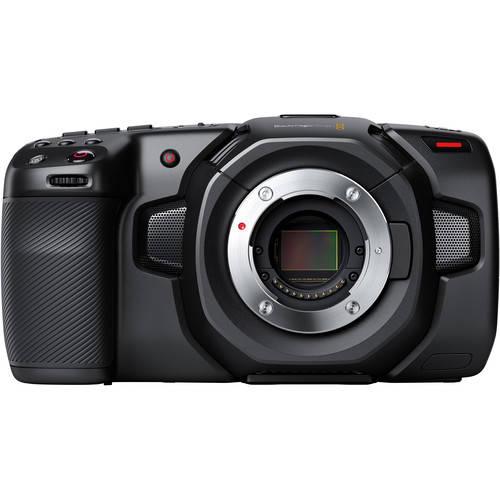


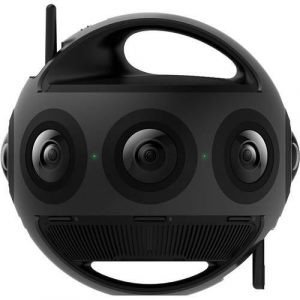
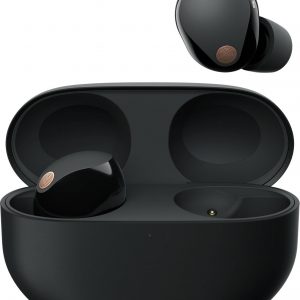
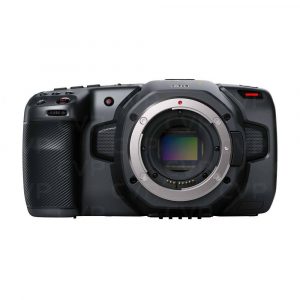
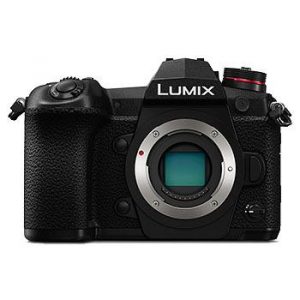
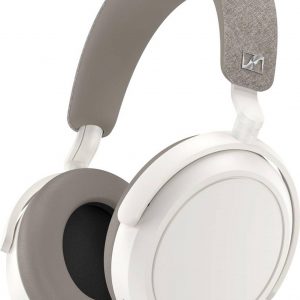
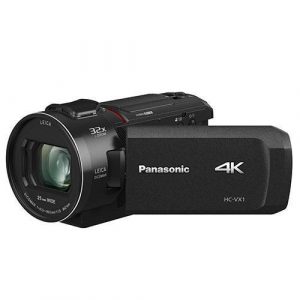
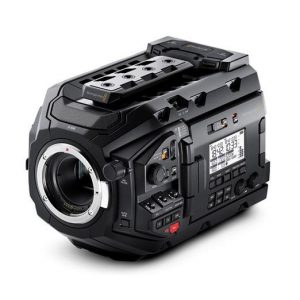
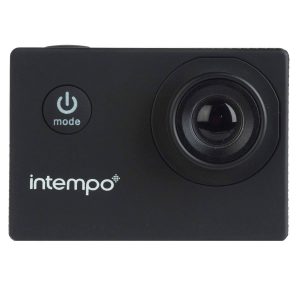
Maximus Woods –
Equipment for conscious users. There is no point in making comparisons with cameras, because none allows you to save Raw files. There is nothing to write about color, quality, because it is black magic after all !!!
Jery –
My first “mirrorless” after many years of using Canon SLRs. The undoubted advantage is the size and compactness as well as ergonomics, which is quite good, although different than in the case of SLRs. The quality of the photos is very good, as befits a full frame.
The AF is phenomenal, it hits everything, even with my bright lenses, which were not perfectly accurate with the “mirror”, here it is simply a shock – 100% accuracy. Eye detection is great, it helps with sharpening on the face. As for me, the camera fully meets my expectations and it was a very successful purchase.
Juliet –
saving Raw files doesn’t automatically make it a great camera, and let’s be real, black magic is just a marketing term for we don’t actually understand how this works.
As I’m writing this review, I’m also pondering the age-old question of why everything looks flat even though the Earth is round. According to today’s news, it’s because our limited human viewpoint hides the planet’s curvature – sounds like a perfect metaphor for Maximus Woods’ opinion on this camera.
In all seriousness, while the Blackmagic Design Pocket Cinema Camera 4K does have its strengths, such as its compact size and impressive image quality, I have to disagree with Maximus Woods’ assertion that it’s somehow superior just because of its Raw file capabilities. The truth is, there are plenty of other cameras on the market that can also save Raw files, but they don’t come with a price tag that’s twice as high.
So, to all you conscious users out there, I say: do your research and don’t be swayed by marketing hype. This camera may have its fans, but it’s not the only game in town, and certainly not worth breaking the bank over.